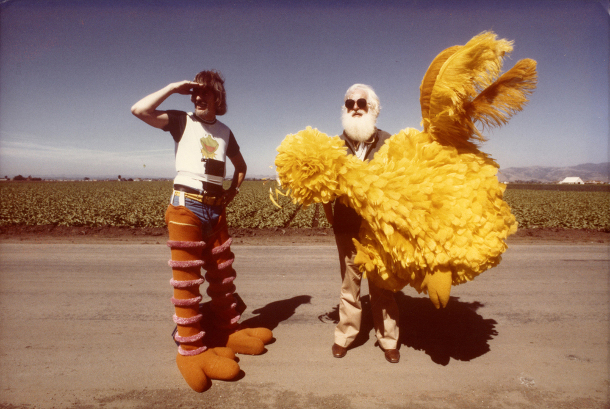The Color of Money (1986)
Cast: Paul Newman, Tom Cruise, Mary Elizabeth Mastrantonio
Director: Martin Scorsese
Country: USA
Genre: Drama | Sport
Official Site: Here
Editor’s Notes: The following review is part of our coverage for TIFF’s Second Coming: Cinema’s Greatest Sequels. For more information on upcoming TIFF film series visit http://tiff.net and follow TIFF on Twitter at @TIFF_NET.
To most, The Color of Money and 1992’s Cape Fear represent Martin Scorsese’s most unfulfilling works and are often glossed over or even forgotten when discussing his work. Now, while I feel that Scorsese has never made a bad movie, Cape Fear came pretty close (and those that do not appreciate the quiet beauty of The Age of Innocence feel that one does too, but they are wrong). That ruling is unjust when applied to The Color of Money a very belated sequel to Robert Rossin’s stellar 1961 film The Hustler.
The film takes place 25 years after Fast Eddie Felson (played in both films by Paul Newman)’s epic match with Minnesota Fats (played by the magnificent Jackie Gleeson at the height of his stardom in a very atypical role). Eddie is now long since out of the pool game, working as a whiskey salesman but keeps his beak in the game as a stake horse for younger talented players (that is, someone who fronts money for hustlers, while getting a large percentage of the winnings for himself).
To most, The Color of Money and 1992’s Cape Fear represent Martin Scorsese’s most unfulfilling works and are often glossed over or even forgotten when discussing his work.
This is the situation Fast Eddie finds himself in when Vincent (Tom Cruise) walks in and cleans up the place. Eddie sees something of his younger self in Vincent and wants to groom him into the player he never got to be, due to the forces at work when he was younger and trying to break into the old guard of players, which was the story of The Hustler. He thinks he can teach Vincent how to be a professional hustler, move up from the showy talent that gets only a little of what the room has to offer instead of working the room and making a lot of money.
With Vincent is his girlfriend Carmen (Mary Elizabeth Mastrantino), who is drawn to Vincent’s charisma but that attraction is fading due to his complacency with her, his talent and his job as a salesman in a children’s store (somewhat akin to Toys ‘r’ Us). Eddie knows the way to Vincent is through Carmen and he exploits that. Carmen knows more or less how to rein in Vincent and so the two try to get Vincent to be more serious and less of a showman.

Eddie takes Vincent and Carmen on the road to try and hone Vincent’s skills before taking him to a big 9-ball tournament in Atlantic City. There are many bumps along the way that lead to their breaking up and meeting again in Atlantic City where Eddie decides to try his hand as a contestant after years away.
Then there is the ending. I won’t go too much into it, but lots of people (notably Roger Ebert) feel that the end is unsatisfying. Just when you think you’re going to get to see two great pool players square off with their A-games, the film ends. I actually think this is the perfect place to end the film. Eddie gives a resounding “I’m back!” and gives a hard push of his cue stick, freeze frame and roll credits. It really doesn’t matter who wins that game. Eddie has reclaimed the fire and passion he’d lost all those years ago and felt like a kid again, playing Minnesota Fats. It doesn’t matter because the film isn’t about winning, it’s about the long game and not giving up. Eddie finally learns that by the end and he doesn’t care if he loses, he’s just going to keep going until he’s back at the top of his game.
Newman finally won an Oscar for this role (his only competitive win) and he earned every inch of that statue here. It’s not often that an actor gets to revisit a character they played before in a new way, weary with age and cynicism a quarter of a century after their original take on the character.
Newman finally won an Oscar for this role (his only competitive win) and he earned every inch of that statue here. It’s not often that an actor gets to revisit a character they played before in a new way, weary with age and cynicism a quarter of a century after their original take on the character. Newman owns this film, and his quiet anger pulls the focus away from the brash, showboating Cruse. There is even a scene where Newman is able to show more vulnerability in Eddie than he ever could in The Hustler when he loses to a hustler played by Forest Whittaker. Their scene together is magical and the aftermath is heartbreaking.
The foil to Newman’s cold, cynical veneer is Cruse’s ostentatious Vincent. Cruise wasn’t really doing much more than he’d done before in Risky Business and Top Gun before and Cocktail and Rain Man after but he holds his own with Newman and even has some genuinely good scenes with him. It wouldn’t be for another three years that a director finally got Cruise to stretch when Oliver Stone cast him for Born on the Fourth of July, but this was kind of the beginning of what Cruise could really do, beyond look good and yell. The flashy parts are the ones that are most remembered from the film, but it’s the quite ones that stood out for me. In the sequence that Eddie is crying because he didn’t see that he was being hustled by Whittaker’s Amos, Vincent tries hard to comfort Eddie saying he’d get him next time and that these things happen. He sounds seriously worried about Eddie and it’s that moment that Cruise started to grow as an actor.
The other main draw to the film was Scorsese’s direction. His constantly moving camera breathes life into a film that could have been routine and stale. He takes a page out of his own book when he films the pool games like he did the boxing bouts in his best film Raging Bull. His angles and close ups combined with Thelma Schoonmaker’s finely paced cuts make pool look as balletic and surreal as his fight sequences did. He gets in there with the players and makes the audience more than spectators, he makes us part of the game. And not just that we feel like we’re playing, we feel like we are the balls on the table or the cue sticks. His framing is also as magnificent as it always is, populating each part of the frame, fore middle and rear with something going on so you have to redirect your focus and even watch the film several times in order to see everything that is going on in each scene and frame. This could have been a ‘for the paycheck’ picture for him, but instead he infused it with all of his glorious technical brilliance and elevates the film from a perfunctory cash grab to something else entirely. Scorsese is interested in Felson and his story after The Hustler and invests that interest into the entire film.
The Color of Money isn’t one of Scorsese’s best films, but it certainly isn’t a bad one either. Scorsese gave Newman the room to expand the character he’d originated 25 years earlier and made the pool sequences exciting and sometimes breathtaking. In the end, it’s an entertaining film that never tries to be more than what it is and never really tries to recreate the vibe of the original. It makes its own mark and as a result, you don’t even really need to see The Hustler before you watch this. You should watch The Hustler anyway, because it’s magnificent, but The Color of Money stands on its own and in my mind makes it a successful sequel.
The Color of Money isn’t one of Scorsese’s best films, but it certainly isn’t a bad one either. Scorsese gave Newman the room to expand the character he’d originated 25 years earlier and made the pool sequences exciting and sometimes breathtaking. In the end, it’s an entertaining film that never tries to be more than what it is and never really tries to recreate the vibe of the original.



